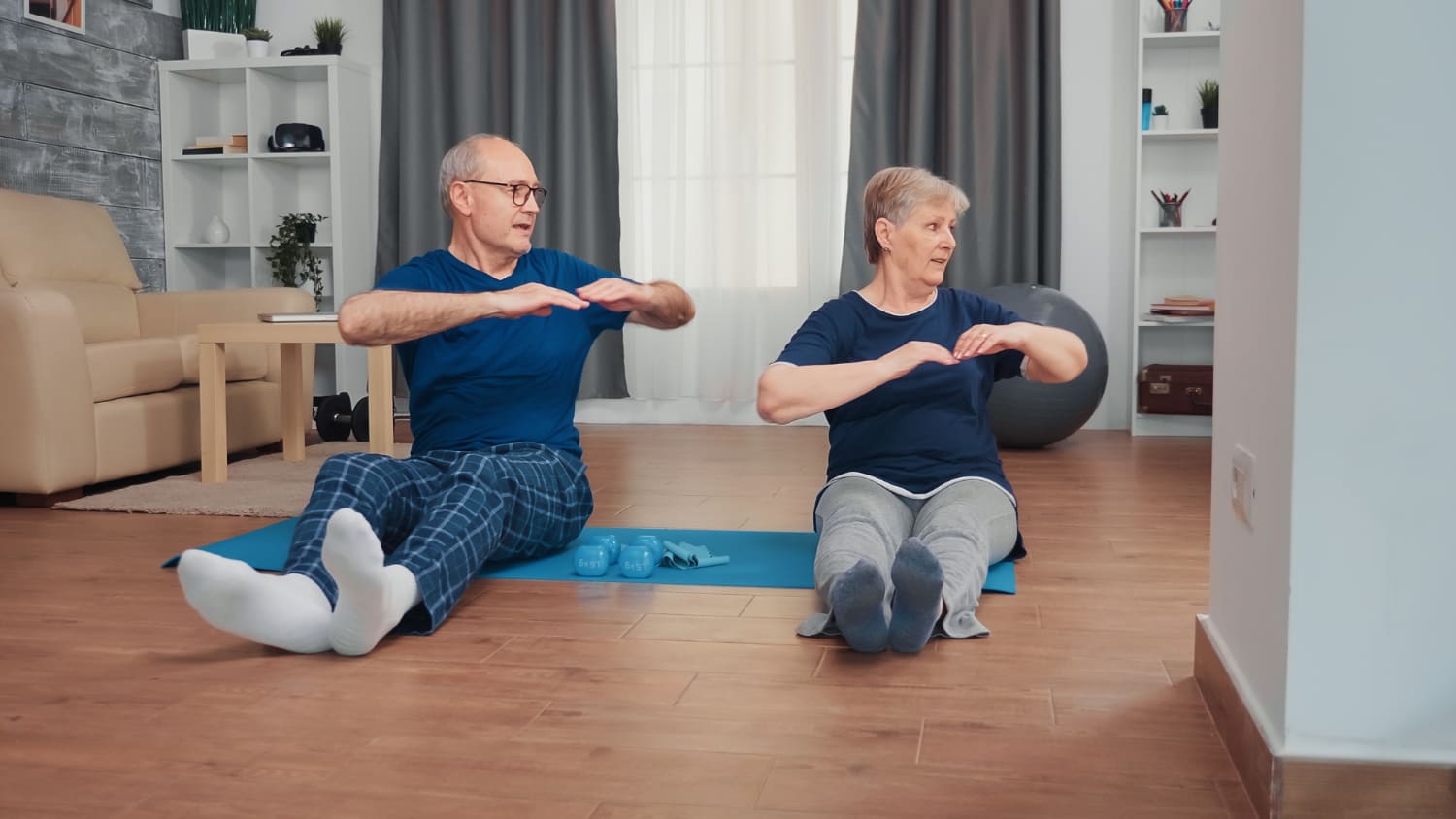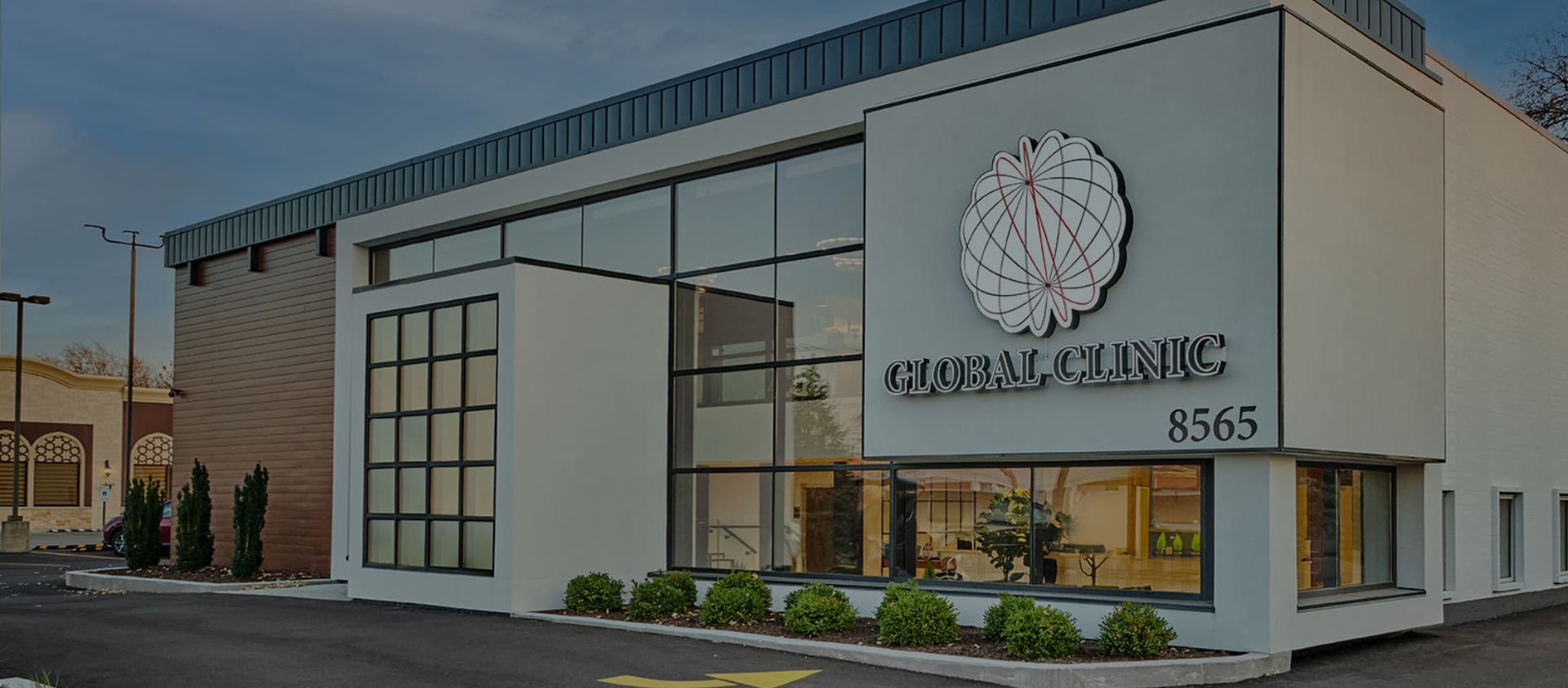Getting older doesn’t mean giving up on feeling strong and capable. Your body may have changed over the years, but it still craves movement. The secret lies in working with your body instead of against it. Gentle exercise gives you a way to stay active and honor where you are right now while helping you feel better tomorrow. When you choose exercises for seniors that target specific needs like reducing pain or improving balance, you’re not just exercising – you’re investing in your independence.
Gentle Exercises for Lower Back Health and Pain Relief
Back pain has a way of making everything harder. Getting out of bed becomes a production. Picking up the mail turns into an ordeal. Millions of people deal with this daily frustration, often accepting it as just part of getting older. But here’s some good news: specific movements can actually help. Gentle back exercises for lower back pain work by loosening tight muscles and strengthening the ones that support your spine. You’re not trying to become a gymnast – you’re giving your back the care it needs.
Pelvic Tilts
Lie down with your knees bent, feet flat on the floor. Rock your pelvis gently forward, pressing your lower back into the floor. Hold it there for a few seconds, then let it go. This simple movement works your deep core muscles – the ones that act like a natural back brace. Five repetitions are plenty to start.
Knee-to-Chest Stretches
Still lying down, pull one knee gently toward your chest with both hands. You should feel a nice stretch in your lower back and hips. Hold it for about 20 seconds, then switch legs. This stretch helps release tension that builds up from sitting or sleeping in one position for too long.
Bridges
Lying with knees bent, slowly lift your bottom off the floor. You’re making a bridge shape with your body from knees to shoulders. Hold for a few seconds, then lower down slowly. This strengthens your glutes and hamstrings – muscles that take pressure off your lower back. Start with just a few and add more as you get stronger.
Remember, these gentle back exercises for lower back pain should never hurt. If something feels wrong, stop. And if back pain persists or gets worse, talking to a professional can help you figure out what’s going on.
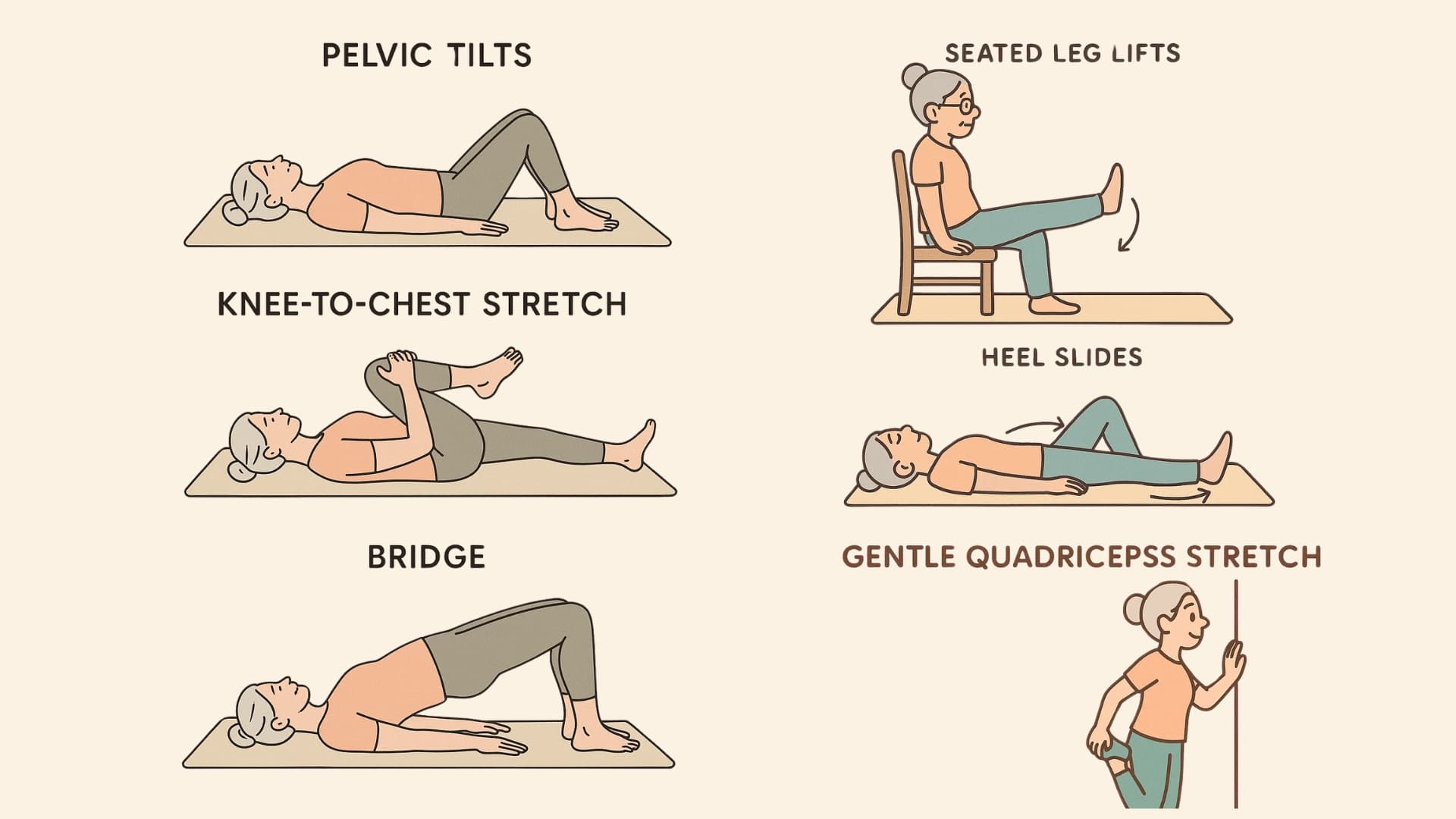
Knee-Friendly Exercises to Improve Mobility and Reduce Pain
Your knees have been with you through everything. All those years of running after kids, climbing stairs, and just getting around – they’ve done their job. Now, maybe they creak a little when you get up in the morning. Maybe they remind you when a storm’s coming. When your knees start complaining, you might think the best thing is to sit still and rest them. Makes sense, right? But here’s the thing – gentle movement actually helps more. These simple exercises strengthen the muscles that support your knees.
Seated Leg Lifts
Sit in a sturdy chair with your back straight. Slowly straighten one leg out in front of you, lifting it parallel to the floor. Hold for a couple of seconds, then lower it slowly without letting your foot touch the ground. This works your quadriceps – those big muscles on the front of your thigh that help your knee stay stable. Eight to ten repetitions per leg is a good start.
Heel Slides
Lie on your back with legs straight. Slide one heel along the floor toward your bottom, bending your knee as much as feels comfortable. Then slide it back out straight. This keeps your knee moving through its range of motion while gently working the muscles. Do about eight to ten slides per leg.
Gentle Quadriceps Stretches
Stand near a wall for balance. Bend one knee, bringing your heel toward your bottom. Use your hand to help if needed, but don’t force it. You should feel a stretch along the front of your thigh. Hold for 15 to 20 seconds, then switch legs. This helps counteract the tightness that comes from too much sitting.
The key with exercises for seniors targeting the knees is to move slowly and pay attention. Sharp pain means that you should stop.
Neck and Shoulder Stretching Exercises to Relieve Tension
Hours of reading, watching TV, or hunching over crossword puzzles can leave your neck and shoulders feeling like they’re carrying the weight of the world. This tension doesn’t just hurt – it can trigger headaches and make you feel older than you are. Gentle stretching exercises for seniors focusing on the upper body can provide almost immediate relief. The best part is that you can do them anywhere, anytime you notice that familiar tightness creeping in.
Neck Rolls
Sit comfortably with your shoulders relaxed. Drop your chin toward your chest, then slowly roll your head to one side, back to center, and to the other side. Don’t roll backward – that can pinch nerves. Do this slowly, like you’re moving through honey. Three to five gentle rolls in each direction are usually enough.
Shoulder Shrugs
Lift both shoulders up toward your ears like you’re saying “I don’t know.” Hold them up there for three seconds, really squeeze them up, then let them drop. Feel that release? Do this five to eight times. It’s amazing how much tension you can carry in your shoulders without realizing it.
Gentle Upper Back Stretches
Clasp your hands in front of your chest and push them away from your body, rounding your upper back slightly. You should feel a nice stretch between your shoulder blades. Hold for 15 to 20 seconds. This opens up all those muscles that get tight from poor posture.
Stretching exercises for seniors are most effective when done routinely during the day. Your feelings might change significantly, even in a few minutes, twice a day.
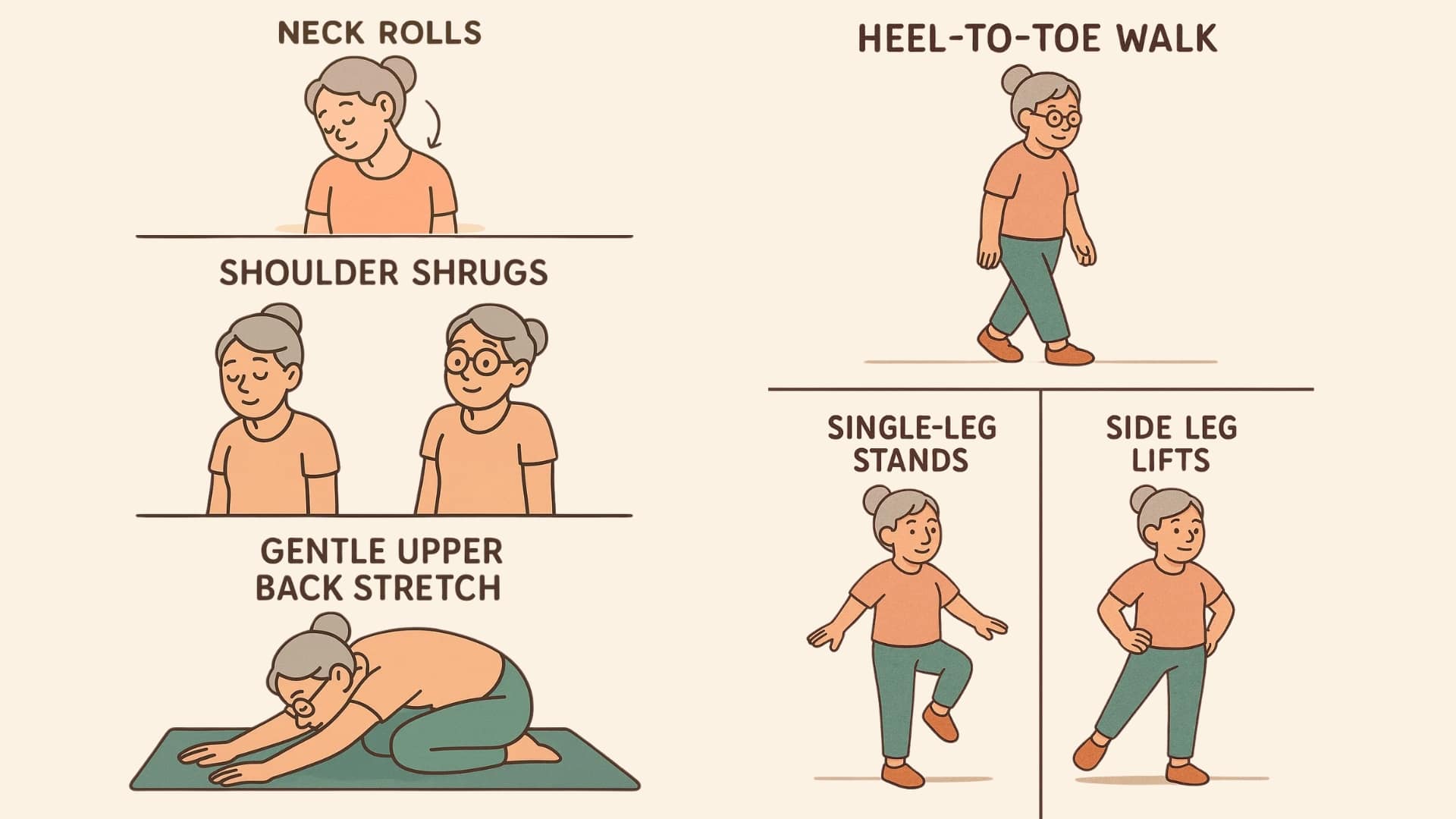
Balance Exercises to Reduce Fall Risk and Boost Stability
Balance isn’t something most people think about until it starts to fail. But staying steady on your feet is one of the most important things you can work on. Falls can change everything in an instant, but the good news is that balance can be improved with practice. Exercises for balance for seniors challenge your stability in safe, controlled ways. Think of it as retraining your body to be more confident on its feet, whether you’re walking through Niles parks or navigating uneven sidewalks around town.
Heel-to-Toe Walk
Walk in a straight line, placing one foot directly in front of the other so your heel touches your toe. Use a wall or counter for light support if you need it. This is trickier than it sounds and mimics the kind of balance you need for everyday walking. Start with five to ten steps.
Single-Leg Stands
Stand behind a sturdy chair and lightly hold the back for support. Lift one foot slightly off the ground and see how long you can balance. Start with just a few seconds and work up to ten seconds. As you get better, try using less support from the chair. This directly improves the kind of balance you need for getting dressed or stepping into the shower.
Side Leg Lifts
Standing behind a chair for support, slowly lift one leg out to the side while keeping your back straight. Hold for a few seconds, then lower slowly. This strengthens the muscles on the sides of your hips that help prevent sideways falls. Do eight to ten lifts per leg.
Safety first with balance practice. Always have something to grab nearby. Wear shoes with a good grip. Start slowly and don’t get discouraged – balance takes time to improve, but it’s time well spent.
Strength Exercises for Seniors: Building Muscle and Bone Health Safely
Though you have to work a bit to preserve what you have, muscle loss is not inevitable with aging. Strength exercises for seniors don’t require a gym membership or fancy equipment. You may find enough of difficulty with your own body weight, a resistance band, or manageable weights. The goal isn’t to become a bodybuilder. It’s to maintain the strength you need for daily life – carrying groceries, getting up from chairs, lifting grandchildren.
Wall Push-Ups
Stand about arm’s length from a wall and place your palms flat against it at shoulder height. Push yourself away from the wall, then return to the starting position. This builds upper body strength without the difficulty of floor push-ups. Start with eight to ten repetitions.
Chair Squats
Sit on the edge of a sturdy chair, then stand up without using your hands. Lower yourself back down slowly. This strengthens your leg muscles and improves the exact movement you need for getting out of cars or up from low seating. Start with five to eight repetitions.
Seated Leg Presses
Sit in a chair and loop a resistance band around both feet. Hold the ends of the band and slowly press one foot forward against the resistance, then return slowly. The resistance adjusts based on how tightly you hold the band. This exercise for seniors approach lets you control the difficulty.
Building strength safely means progressing gradually. Add more repetitions before adding resistance. Focus on smooth, controlled movements. Most importantly, rest between strength sessions – muscles actually get stronger during recovery.
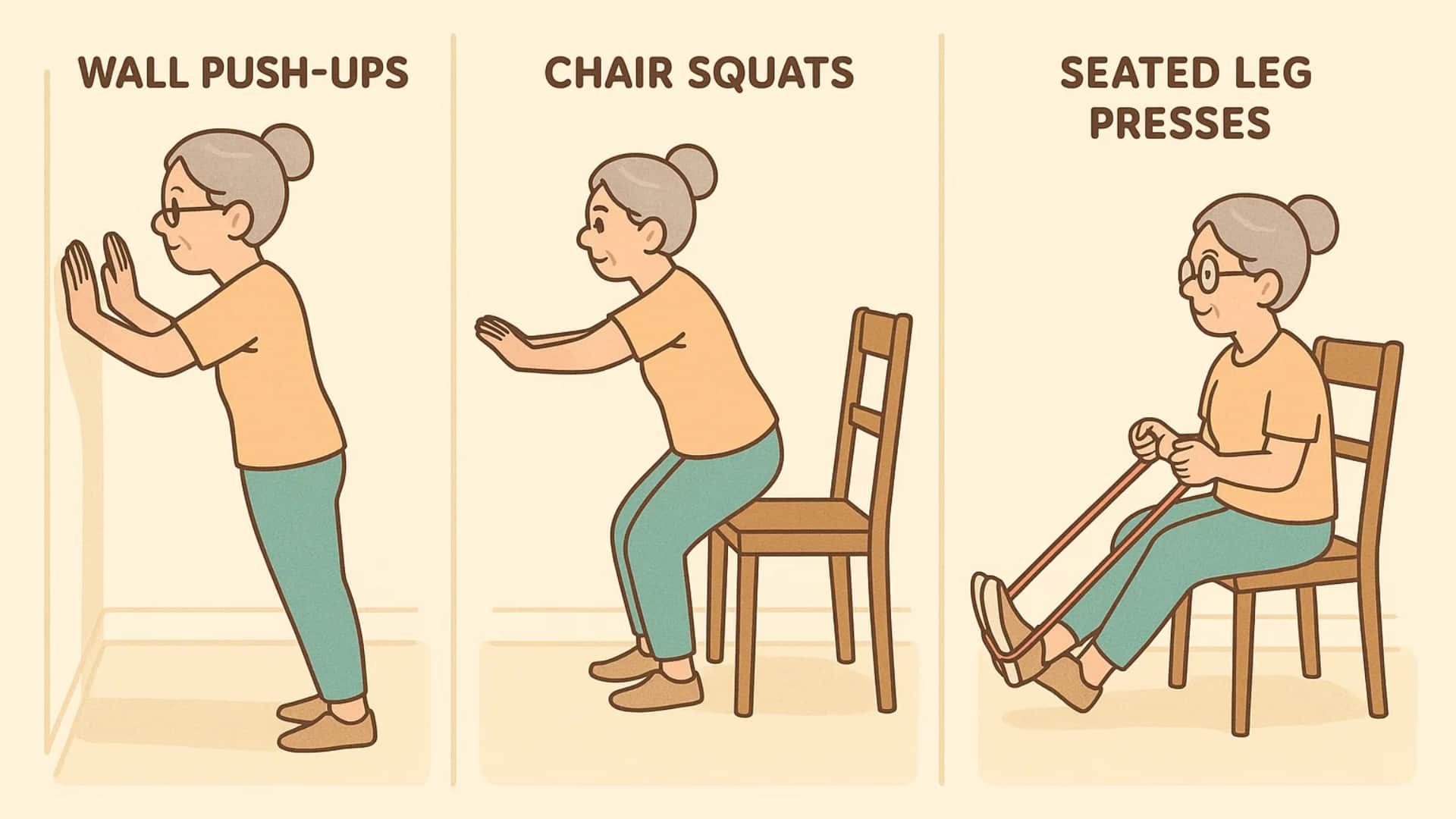
Incorporating Gentle Stretching Exercises to Enhance Flexibility
Flexibility often sneaks away gradually. One day, you find you can’t quite reach that top shelf anymore, or driving has become tough while glancing over your shoulder. Exercises such as gentle stretching can help you regain and preserve your range of motion. Good stretching is more about patience than about strength. Not demanding it, you are guiding your muscles and connective tissues to lengthen. Particularly in tissues less elastic than they once were, aggressive stretching can damage them.
Focus on these major muscle groups for maximum benefit:
- Calves and ankles – improves walking stability and circulation
- Hamstrings – reduces lower back tension and knee stiffness
- Quadriceps – maintains knee flexibility and hip mobility
- Hip flexors – counteracts tightness from prolonged sitting
- Shoulders and upper back – relieves tension from poor posture
- Neck muscles – prevents headaches and improves range of motion
Hold each stretch for 15 to 30 seconds while breathing deeply. Let your muscles relax gradually into the stretch. Never bounce or force it – think of it as a gentle conversation with your body.
Building a stretching habit works best when you attach it to something you already do:
- After your morning shower, when muscles are naturally warmer
- During evening television time, for a relaxing end-of-day routine
- Before bedtime, to release daily tension and improve sleep
- Between daily activities, as brief movement breaks
Gentle stretching exercises provide benefits you’ll notice right away, like feeling less stiff. Long-term improvements in flexibility develop over weeks and months of consistent practice.
Managing Pain Through Gentle Exercise and Professional Support
Living with chronic pain can make the idea of exercises for seniors seem backwards. Moving when you hurt doesn’t make intuitive sense. But appropriate movement often provides more lasting relief than staying still. The trick is learning the difference between pain that warns you to stop and the normal discomfort of gentle muscle work.
Learn to recognize these important pain signals:
- Sharp, shooting pain – stop immediately and seek professional advice
- Sudden, intense discomfort – indicates potential injury or strain
- Mild muscle fatigue – a normal response that often improves with gentle movement
- Slight stiffness during movement – typically decreases as you warm up
- Gradual muscle soreness – expected after appropriate exercise levels
If you haven’t been active recently, start with just five to ten minutes of gentle movement daily. Your body needs time to remember how to move comfortably. Jumping in too enthusiastically often leads to setbacks that can discourage you from continuing.
Sometimes, gentle exercise alone isn’t enough for complex pain conditions. Professional guidance can provide additional strategies and make sure your exercise routine works well with other treatments. At Global Clinic, we work with seniors throughout the Niles area who want to combine movement with comprehensive pain management approaches tailored to their specific situation.
The combination of gentle movement and professional support often works better than either approach alone. Exercise builds the foundation for better strength, flexibility, and function, while professional support addresses underlying causes and provides additional pain relief strategies.
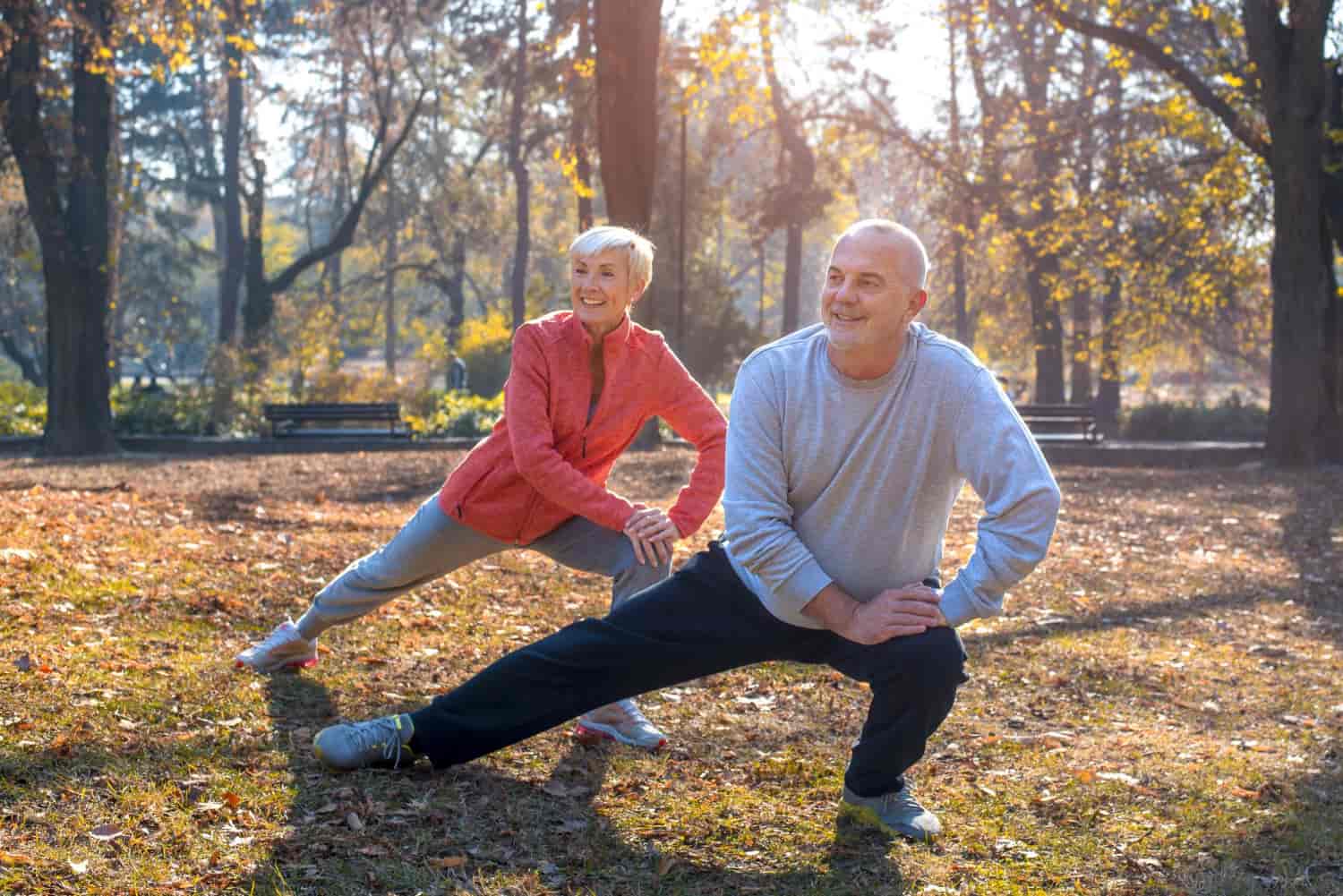
Embrace Purpose-Driven Gentle Exercise for a Healthier, Happier Life
Your exercises don’t have to be time-consuming or difficult to really benefit you. Little, steady efforts add up to notable changes in your feelings and capacity for action. Though you have a starting point from the exercises we have discussed, feel free to concentrate on what best benefits you.
We know starting anything new can feel like a big step, especially when you’re dealing with pain or stiffness. That’s exactly why we’re here. At Global Clinic, we see seniors every day who thought their active days were behind them. Many of our patients come to us frustrated, wondering if they’ll ever feel comfortable moving again.
Here’s what we’ve learned: the right support makes all the difference. We’re not just another clinic in Niles — we’re neighbors who understand what you’re going through. Our team specializes in helping people like you find their way back to the activities they miss. Whether it’s gardening without back pain or walking to the mailbox without worry, we work with you to make it happen.
Your body has carried you this far. With the right care and gentle movement, it can carry you much further. Why not give us a call and see how we can help? You deserve to feel good in your own skin again.
FAQ
What if I feel sore after exercising?
Mild muscle soreness the next day is normal and usually means you’re making progress. Sharp pain during exercise means that it is better to stop and see your health provider.
Do I need special equipment for gentle exercises?
Not really. A sturdy chair, a wall, and maybe a resistance band are all you need for most exercises.
Is it safe to exercise if I have arthritis?
Gentle movement often helps arthritis pain more than avoiding activity completely. Check with your doctor about what movements work best for your specific situation.
How long before I see results?
Most people notice they feel a bit better within a week or two. Strength and balance improvements usually show up after 4-6 weeks of regular practice.
What’s the best time of day to exercise?
Whenever you’ll actually do it consistently. Some people prefer mornings when they’re fresh, others like evenings to unwind.

